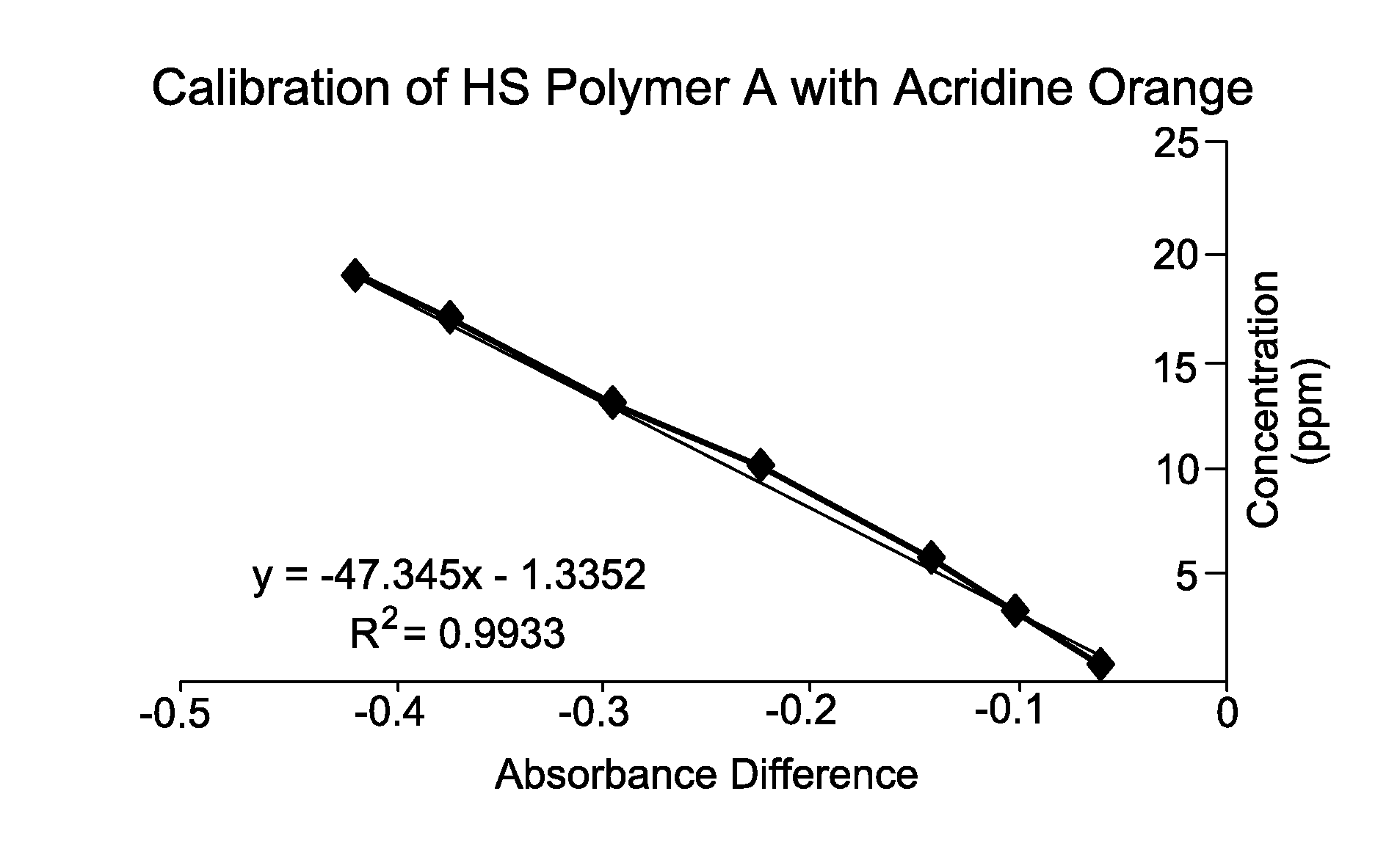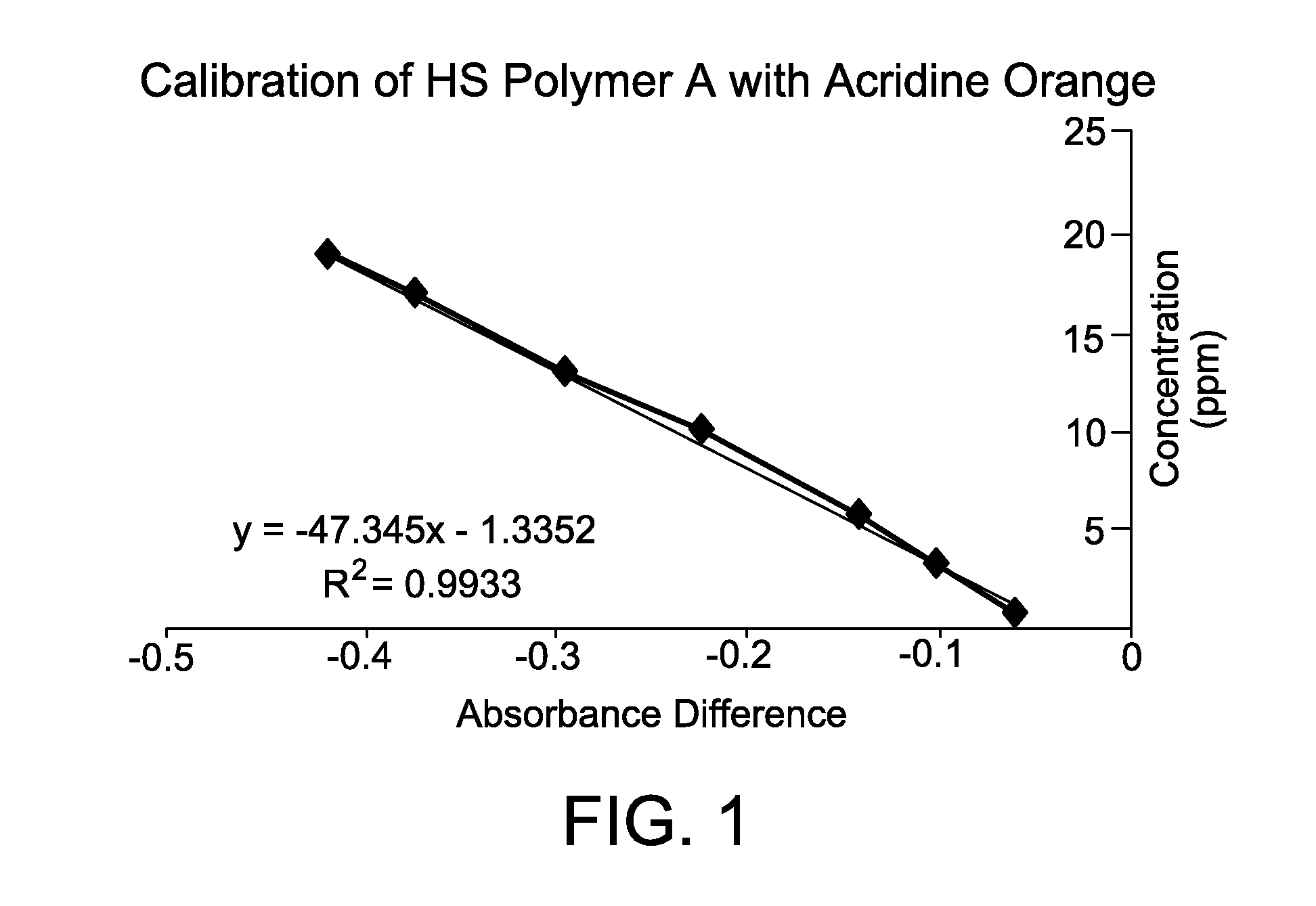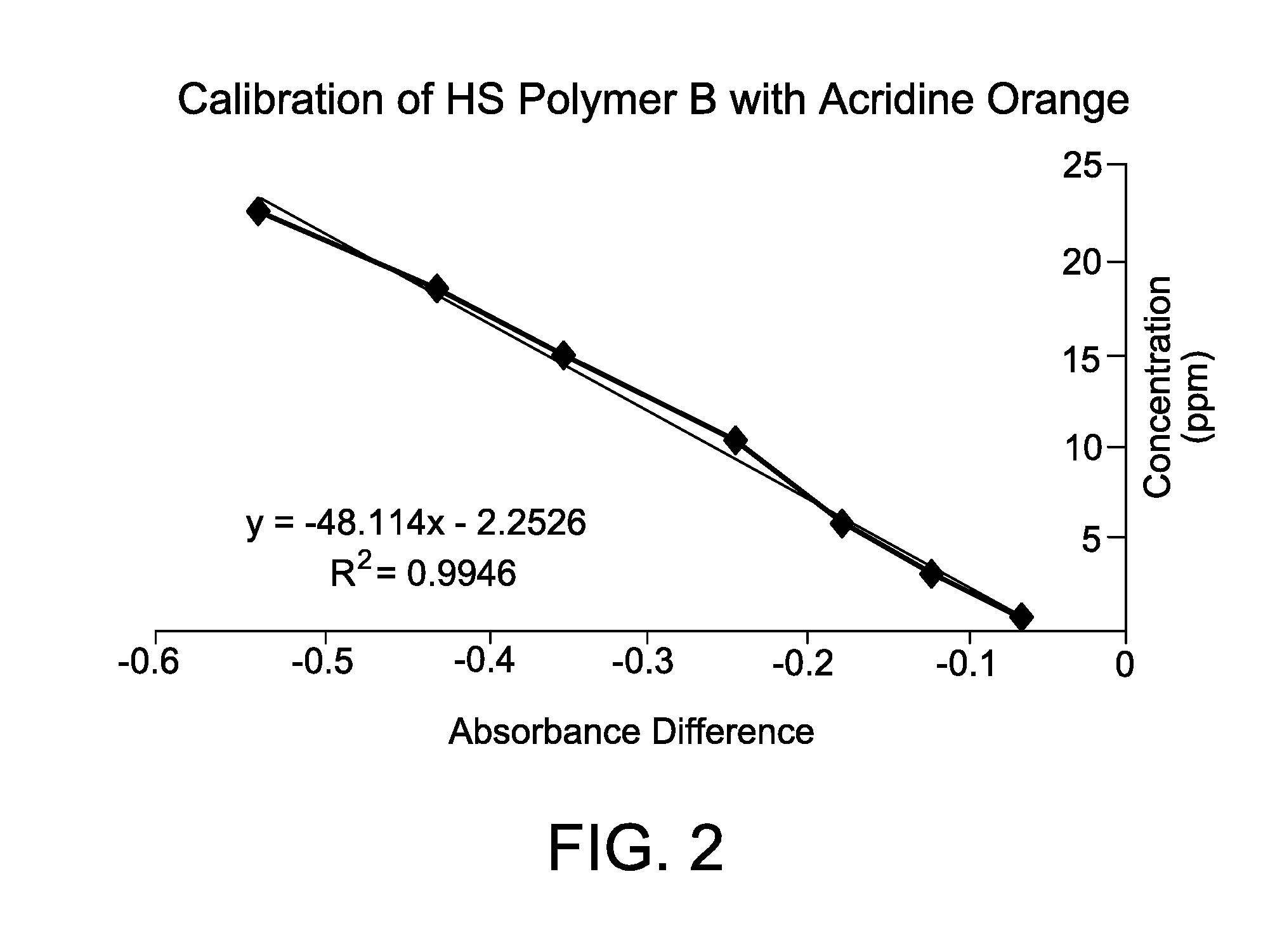Method for Measuring Polymer Concentration in Water Systems
a technology for measuring polymer concentration and water systems, applied in the direction of testing water, using chemical indicators, instruments, etc., can solve the problems of scaling and corrosion in industrial water systems, process shut-down and production time loss, scaling and corrosion will increase, etc., to achieve stable solution, good linear response, and long shelf life
- Summary
- Abstract
- Description
- Claims
- Application Information
AI Technical Summary
Benefits of technology
Problems solved by technology
Method used
Image
Examples
example 1
[0068]This Example illustrates the construction and linearity of a calibration curve for an anionic polymer of interest, which plots the absorbance difference vs. known concentration of the anionic polymer.
[0069]Accordingly, an acridine orange standard solution was prepared by combining acridine orange hemi(zinc chloride) salt (0.0189 mmol, 7 mg, Sigma-Aldrich) to a neutral pH buffer solution comprising citric acid (1 mL of 0.1M aq.), Na2HPO4 (2.5 mL of 0.2 M aq.), and 900 mL deionized water. Additional deionized water was added to the solution until the total volume was 1 liter. Anionic polymer standard solutions were prepared separately using known amounts of anionic polymer (0.6 to 20 ppm).
[0070]A 1 mL aliquot of each anionic polymer standard solution was added to a 25 mL aliquot of acridine orange standard solution. After 30 seconds, the absorbance of the anionic polymer-acridine orange standard solution and the acridine orange standard solution by itself was measured at 490 nm ...
example 2
[0073]This Example illustrates the accuracy and reproducibility of an embodiment of the present inventive method.
[0074]The accuracy and reproducibility was determined by analyzing aqueous samples comprising a known amount of anionic polymer. The experiment was conducted using acridine orange in the presence of a citrate-based buffer and phosphonobutane-1,2,4-tricarboxylic acid.
[0075]Accordingly, an acridine orange standard solution comprising a citrate-based buffer was prepared by combining acridine orange hemi(zinc chloride) salt (0.0189 mmol, 7 mg), citric acid (1 mL of 0.1M aq.), Na2HPO4 (2.5 mL of 0.2 M aq.), and 900 mL deionized water. Additional deionized water was added to the solution until the total volume was 1 liter. An acridine orange standard solution comprising a phosphonic acid chelant was prepared by combining acridine orange hemi(zinc chloride) salt (0.0189 mmol, 7 mg), phosphonobutane-1,2,4-tricarboxylic acid (PBTC, 0.870 mmol, 0.235 g), and 900 mL deionized water....
example 3
[0079]This Example examines the effect of major ions on the absorbance of an acridine compound-anionic polymer mixture.
[0080]Accordingly, three solutions (Samples A-C) were prepared and analyzed spectroscopically to determine if the presence of calcium, magnesium, and alkalinity would affect the measured absorbance of an acridine orange-anionic polymer mixture.
[0081]Accordingly, Samples A-C were prepared and analyzed. Sample A comprised calcium (1700 ppm), magnesium (1700 ppm), and alkalinity (2000 ppm). Sample B comprised anionic polymer (9 ppm). Sample C comprised calcium (1700 ppm), magnesium (1700 ppm), alkalinity (2000 ppm), and anionic polymer (9 ppm). An acridine orange standard solution comprising a phosphonic acid chelant was prepared by combining acridine orange hemi(zinc chloride) salt (0.0189 mmol, 7 mg), phosphonobutane-1,2,4-tricarboxylic acid (PBTC, 0.870 mmol, 0.235 g), and 900 mL deionized water. Additional deionized water was added to the solution until the total v...
PUM
| Property | Measurement | Unit |
|---|---|---|
| molecular weight | aaaaa | aaaaa |
| molecular weight | aaaaa | aaaaa |
| molecular weight | aaaaa | aaaaa |
Abstract
Description
Claims
Application Information
 Login to View More
Login to View More - R&D
- Intellectual Property
- Life Sciences
- Materials
- Tech Scout
- Unparalleled Data Quality
- Higher Quality Content
- 60% Fewer Hallucinations
Browse by: Latest US Patents, China's latest patents, Technical Efficacy Thesaurus, Application Domain, Technology Topic, Popular Technical Reports.
© 2025 PatSnap. All rights reserved.Legal|Privacy policy|Modern Slavery Act Transparency Statement|Sitemap|About US| Contact US: help@patsnap.com



